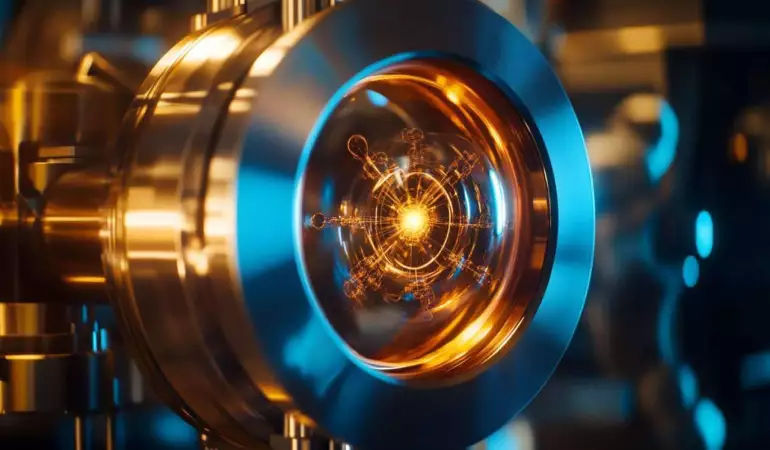Physicists uncover the mysterious quantum world inside a proton
The interior of the proton is a highly dynamic but difficult-to-understand region where quarks and gluons constantly interact in a changing environment of virtual particles. Based on quantum information theory and quantum entanglement, scientists have developed a new method to describe these interactions clearly and precisely.
February 12, 2025 07:10
The inside of a proton is studied through electron-proton collisions
An international team of scientists from Brookhaven National Laboratory, Stony Brook University (USA), the University of Puebla (Mexico) and the Institute of Nuclear Physics of the Polish Academy of Sciences has developed a method that successfully explains, for the first time, the scattering of secondary particles by collisions between electrons and protons.
The proton is not an elementary particle - it is made up of three quarks connected by gluons, which provide the strong interaction.
These interactions are so intense that virtual pairs of quarks and gluons are constantly appearing and disappearing inside the proton.
"To understand what happens inside a proton, we need to get inside it, and proton-electron collisions are the best way to do this," says Professor Krzysztof Kutak.
Quantum entanglement inside a proton
The central assumption of the study was that the quarks and gluons - called partons - of the proton are quantumly entangled.
Quantum entanglement means that the properties of one object change when the properties of another object change, even though information about the change has not been transmitted.
Inside a proton, entanglement takes place over very small distances and affects all partons of the proton.
When an electron collides with a proton, an electromagnetic interaction takes place, whereby the photon begins to "see" the structure of the proton.
This interaction can cause the proton to decay and create a number of secondary particles. The number of secondary particles depends on the details of the proton's internal structure revealed by the photon.
Entanglement measurement using entropy
Researchers have used entropy to measure entanglement in protons.
Because a photon inside a proton only 'sees' part of its structure, the entanglement entropy is non-zero. This provides a convenient measure of entanglement in protons.
An international team has shown that the entanglement entropy can be used to predict the entropy of hadrons created by the collision of electrons and protons.
This is confirmed by measurements from the HERA experiment carried out in Hamburg in 2006-2007.
The authors of the study stress that they have now been able to describe all the entropy data for deep collisions in a single formalism.
Future accelerators and new discoveries
The researchers hope that the theory they have developed will lead to a better interpretation of data from future accelerators such as the Electron-Ion Collider (EIC).
The new experimental data, together with this theoretical approach, will help to address important problems in nuclear physics.
Physicists believe that entropy analysis will lead to a better understanding of how the strong interaction links quarks and gluons in protons, and how the size of the atomic nucleus influences the properties of protons.




